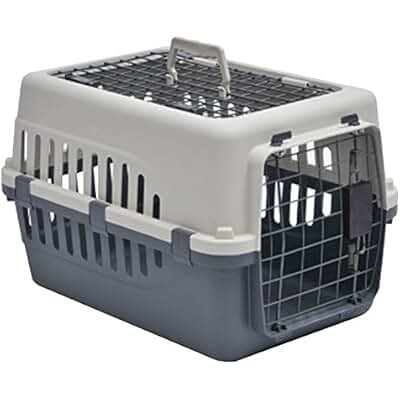Traveling with your cat can be an exciting adventure, but it requires careful planning to ensure both you and your feline friend have a smooth and enjoyable experience. Whether you’re embarking on a two-day road trip or a longer journey, the key to success lies in preparation, understanding your cat’s needs, and creating a safe and comfortable environment for them during travel.
The Importance of a Proper Cat Carrier
One of the most crucial elements of traveling with your cat is choosing the right carrier. A high-quality cat carrier should have a front and top opening to allow for easy entry and exit. It should also be large enough for your cat to stand up and turn around comfortably. If you have a larger breed like a Maine Coon, consider using a dog-sized carrier to ensure adequate space.
The carrier should be well-ventilated and made of sturdy materials such as plastic or wire mesh. It’s also important to line the bottom with a cozy blanket or absorbent pad to provide comfort and manage any accidents. Make sure the carrier is secure and can be fastened in your vehicle to prevent it from moving around during transit.
Making the Carrier a Comfortable Space

Before the trip, introduce your cat to the carrier by placing it in a quiet area of your home with the top open. Allow your cat to explore it at their own pace. You can place familiar items like a blanket or toy inside to make it more inviting. Feeding your cat in the carrier can help create positive associations, making it feel like a safe and familiar space.
If your cat is particularly anxious, consider using a pheromone spray like FELIWAY® to help reduce stress. These sprays mimic natural feline pheromones and can create a calming effect. Additionally, covering the carrier with a blanket can block out stressful visual stimuli, helping your cat feel more secure.
Traveling by Car: Safety and Comfort

When traveling by car, it’s essential to keep the carrier level and secure. Buckling the carrier into your vehicle with a seatbelt can prevent it from shifting during sudden stops or turns. For longer trips, offer small amounts of food and water in the carrier to keep your cat hydrated and nourished.
Make sure to take regular breaks during the drive, allowing your cat to stretch and use the bathroom if needed. Avoid leaving your cat unattended in the car, as temperatures can rise quickly and pose a serious risk of heatstroke.
Traveling by Airplane: Additional Considerations
If you’re flying with your cat, a soft carrier with a waterproof bottom is ideal. Ensure the carrier is no larger than a typical carry-on bag (17.5 x 12 x 7.5 inches) and check with your airline for specific requirements. Your cat will need to be removed from the carrier during TSA screening, so a harness that attaches to a leash is essential for safe handling.
Always bring your cat’s medical documents, including vaccination records and proof of health. Airlines may require additional paperwork, so it’s wise to confirm these details in advance.
Managing Anxiety and Stress
Some cats may experience anxiety during travel, especially if they are not used to being in a carrier. Consult your veterinarian about options for managing stress, such as supplements or medications. Common choices include Solliquin, Composure, Calming Care, Feliway Spray, Gabapentin, Alprazolam, and Buprenorphine. However, it’s important to test any medication at home before the trip to ensure your cat tolerates it well.
A Thundershirt® or a pheromone calming collar can also help reduce anxiety. These products work by providing a gentle pressure or releasing calming scents that soothe your cat.
Packing Essentials for Your Cat
In addition to the carrier, pack essentials such as your cat’s favorite toys, blankets, and food. Bring along their own litterbox and litter if possible, as changes in scent can cause stress. Include extra blankets, paper towels, and a cleaner in case of accidents. If you’re flying, unscented baby wipes or cat-specific wipes will be useful for quick cleanups.
Also, ensure your cat has proper identification, including a microchip and a collar with an ID tag. In case of separation, this will increase the chances of reuniting with your pet.
Final Tips for a Successful Road Trip
- Withhold breakfast on the day of travel to minimize the risk of nausea.
- Offer water at rest stops to keep your cat hydrated.
- Test the carrier at home before the trip to ensure your cat is comfortable.
- Avoid overstimulating your cat with loud noises or unfamiliar environments during the journey.
By taking the time to prepare and understand your cat’s needs, you can turn a road trip into a memorable and stress-free experience for both of you. With the right carrier, supplies, and a little patience, your cat can enjoy the adventure just as much as you do.



